Layering clothes is the best way to stay warm and dry in bad weather. When done correctly, these same layers can keep you comfortable in a variety of temperatures and activity levels. Here’s how it works.
How Many Layers to Wear?
You should wear three layers of clothing in bad weather. They are:
- Base layer for moisture control
- Mid layer for insulation
- Shell layer for weather protection
In really cold weather, you might wear two mid layers for extra insulation. Or, in milder weather, you might skip a mid layer on your arms and legs as these don’t need as much heat as the core.
However, it’s not just the number of layers which matters. For each layer to do its job, the material is important.
Base Layer = Moisture Control
The base is a thin layer which fits snuggly against the skin. Its main purpose is to wicks moisture (such as from sweat) away from your body.
Wicking is important for staying warm: if you are wet, then your body will lose heat from evaporative heat loss.
Wool is considered the best base layer material because it has amazing wicking properties and still traps heat when wet. There are many “performance” synthetic materials which also have good wicking properties. Cotton and bamboo materials are terrible for base layers because they absorb moisture. This is where the phrase “cotton kills” comes from.
Also read:
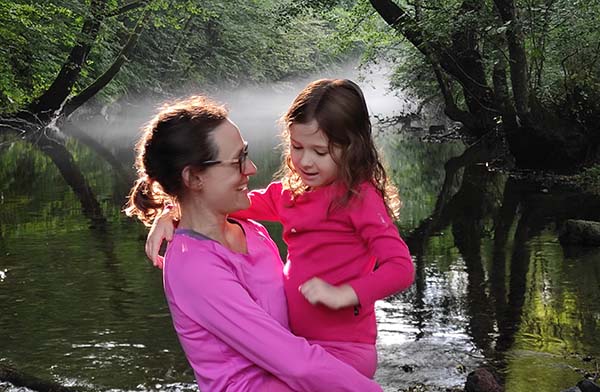
My daughter and I in our synthetic base layer tops.
Mid Layer = Insulation
Also called the insulating layer, the mid layer is what traps heats. To trap heat, the mid layer needs to be made out of a fluffy material with lots of air pockets. A good mid layer will also be breathable and have some wicking properties too.
Wool, fleece, down, and synthetic “puffers” are all good materials for mid layers.
Because the arms don’t require as much heat as the core, a lot of mid layer jackets have less insulation in the arms. You might also opt for a vest instead of a jacket as your mid layer top. Likewise, the legs don’t require as much insulation so many people skip a mid layer bottom when hiking or skiing.
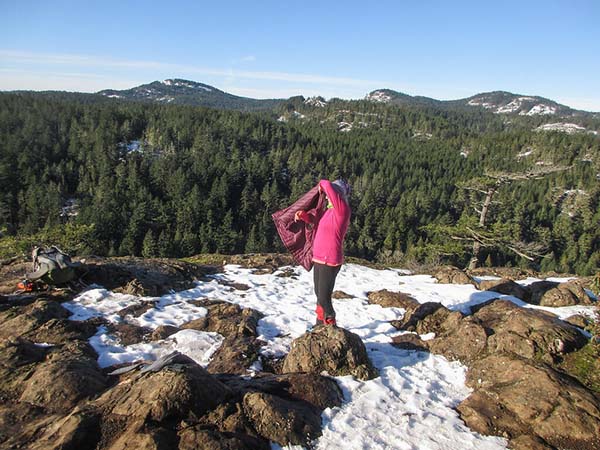
Putting on a puffy vest as the mid layer
Shell Layer = Weather Protection
The shell layer protects you from the elements, such as rain and snow. Without the shell, the mid layer would get wet and not be able to do its job. The shell also protects against wind so heat isn’t blown off the body.
Shell layers are usually broken down into two types: soft shell and hard shell.
- Soft Shell: These are usually made from a water-resistant and somewhat windproof material. While they don’t completely protect from the elements, the material is more breathable. This is preferable when doing strenuous activity such as hiking or skiing.
- Hard Shell: These are made from completely waterproof materials. The tradeoff is that the materials aren’t breathable, so you can start to sweat in them (which in turn can make you feel cold). Hard shells are best used in very harsh weather conditions and/or when you aren’t doing strenuous physical activity.
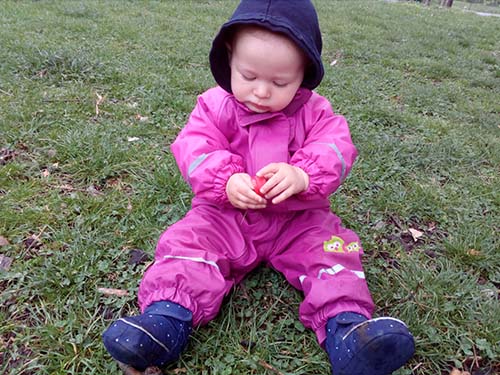
My daughter definitely got a hard shell suit for playing on the wet, muddy ground! Also read: Best Rain Suits for Babies
Really good shells have “vents” in them so you can release heat.
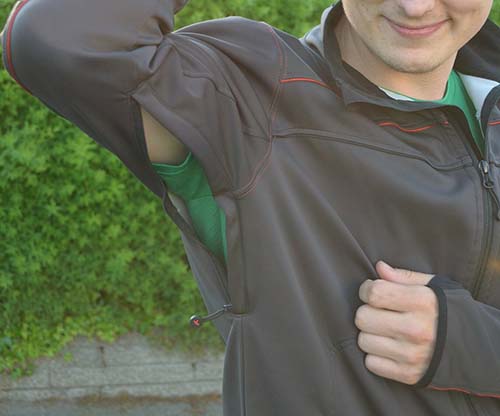
Armpit vent in shell jacket
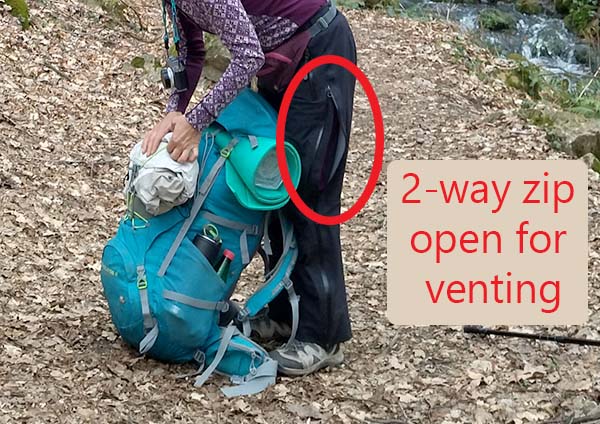
The two-way zipper on these shell pants mean I can open them up for venting.
Adjusting Layers for the Temperature
I have at least 10 different base layers and just as many mid layers, plus a few shell jackets and shell pants. Having all these options allows me to mix and match layers to get the perfect system for the weather conditions.
For example, when hiking in mild weather, I will choose my thinnest base layer top and a thin mid layer. I bring a rain jacket as a shell to put on in case the weather turns bad.
When it’s colder, I’ll choose one of my midweight base and ligthweight mid layers and pair it with one of my soft shell jackets. In really cold weather, I put on a heavyweight wool base layer and thick wool hoodie as my mid.
The image below shows how you can mix and match layers to get the perfect comfort level.
Using the Same Base Layer and Shell with Different Mid Layers
Not everyone wants to buy a zillion different pieces of clothing for each layer. Luckily, you don’t have to.
You only really need:
- One base layer
- Three mid layers (thin, medium and thicker insulation)
- One shell
With just these 5 pieces, you can make multiple layering combinations to cover almost all weather conditions. Since mid layers are cheap and easy to find in secondhand stores (your grandma’s wool sweater will work just fine!), creating this layering system doesn’t even have to be expensive.
The image below shows how you can adjust the mid layer to get three levels of temperature protection. You could even use some of the mid layers together (like wearing the vest underneath the down jacket) to get even more adjustment.
How to Wear Layers Properly
Layering does NOT mean you should constantly be adding/removing layers to feel comfortable. When done properly, you shouldn’t have to adjust your layers often or even at all.
Examples:
- A morning hike: It’s chilly in the morning, so you wear your base layer and mid layer. As the temperatures warm up, you remove the mid layer. The shell layer stays in your pack in case the weather takes a turn for the worse.
- A strenuous fall hike: The weather is chilly so you wear your base layer and mid layer. You quickly warm up from the physical activity so you unzip your mid layer or take it off completely. When you stop for breaks, you put the mid layer back on so your body doesn’t lose heat while resting.
- A hike in rainy but warm weather: You wear the base layer and a soft shell jacket. There’s no need for the mid layer.
- A hike in cold, rainy weather: You wear your base layer, the mid layer and a soft shell jacket to keep you dry. A soft shell is a better choice because you would get sweaty wearing a hard shell.
- Camping in cold, rainy weather: You wear your base layer, mid layer and a hard shell jacket. The hard shell is a better choice because you aren’t doing any strenuous activity which would make you sweat.
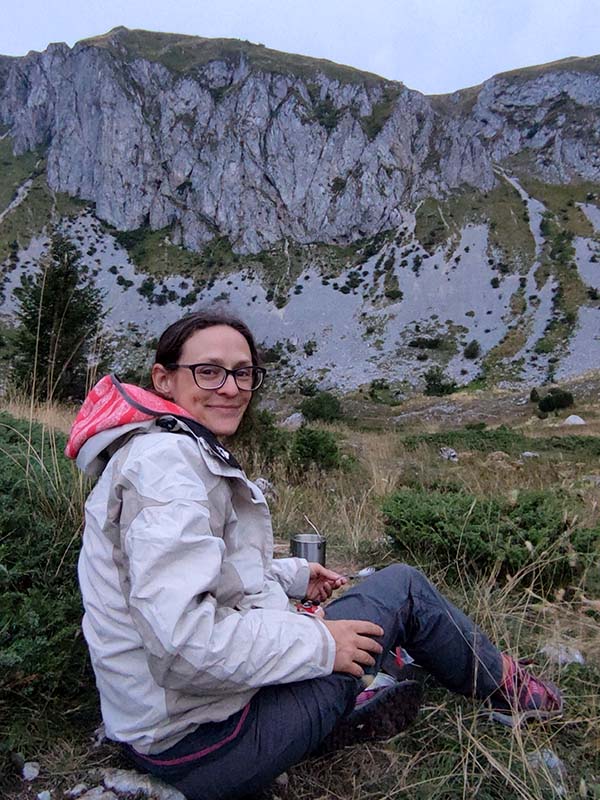
It’s cold and windy at 6,000ft. I’m done hiking for the day so not producing a lot of heat. I’m wearing all three layers on my core and two layers (base + shell) on my legs.
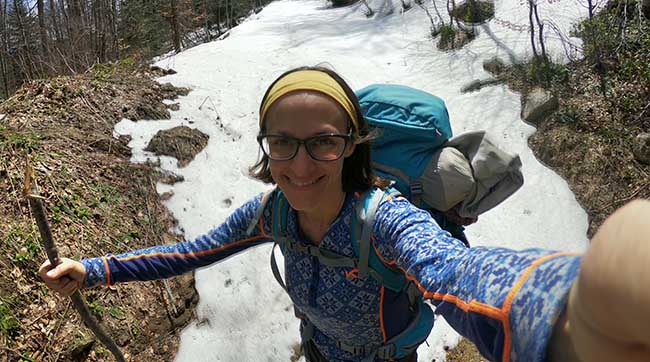
My heavyweight Merino wool base layer top was perfect for this strenous hike. It was sweating like crazy. If it had been windy, I would have needed my shell.
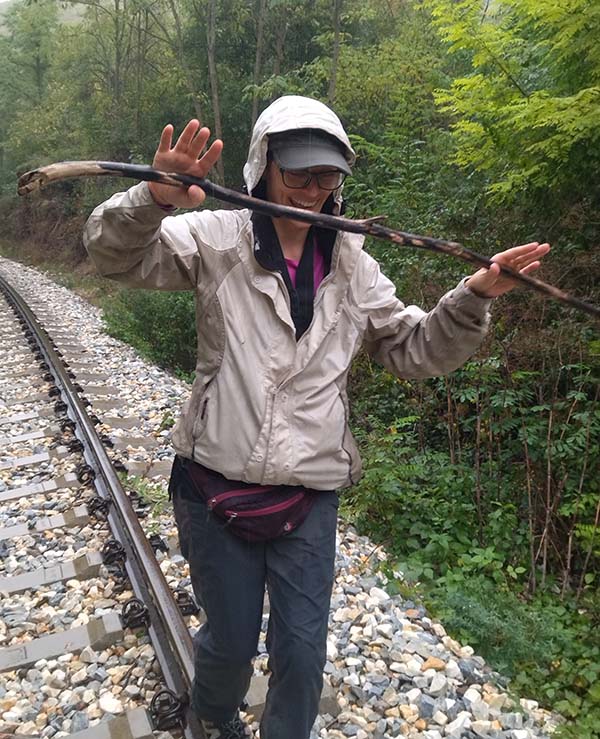
It’s raining but warm, so I’m wearing just a shell layer over my base.
Layering Applies to the Hands and Feet As Well!
The 3-layer system also applies to keeping your hands and feet warm too. Here’s how it looks.
Feet:
- Base layer = thin liner socks
- Mid layer = thicker sock
- Shell layer = boot/shoe
In warm weather, a lot of people only wear one pair of socks. However, since liner socks are wicking, wearing two pairs of socks can do wonders at preventing blisters.
Hands:
- Base layer = thin liner glove
- Mid layer = thicker glove or mitten
- Shell layer = waterproof mitt
No one wants to put three layers on their hands. So, good mitts for really cold weather combine the mid and shell into one mitt. Some even incorporate a liner glove so you only have to put one mitt on. Also read: Best Insulated Shell Mittens
Want tons of camping info in PRINTABLE format?
Then you need my Camping Cheat Sheets.
The manual has 42 pages crammed with illustrated guides about everything from campfire cooking to wilderness first aid.
And because you made it to the end of this post, I’ll even give you 50% off 😀
Get Your Copy for 50% Off Here
Image credits:
“Mary deciding to put clothes on again” (CC BY-NC-ND 2.0) by M.E. Sanseverino,
“DSC_0201” (CC BY-NC 2.0) by GrejGuide.dk,


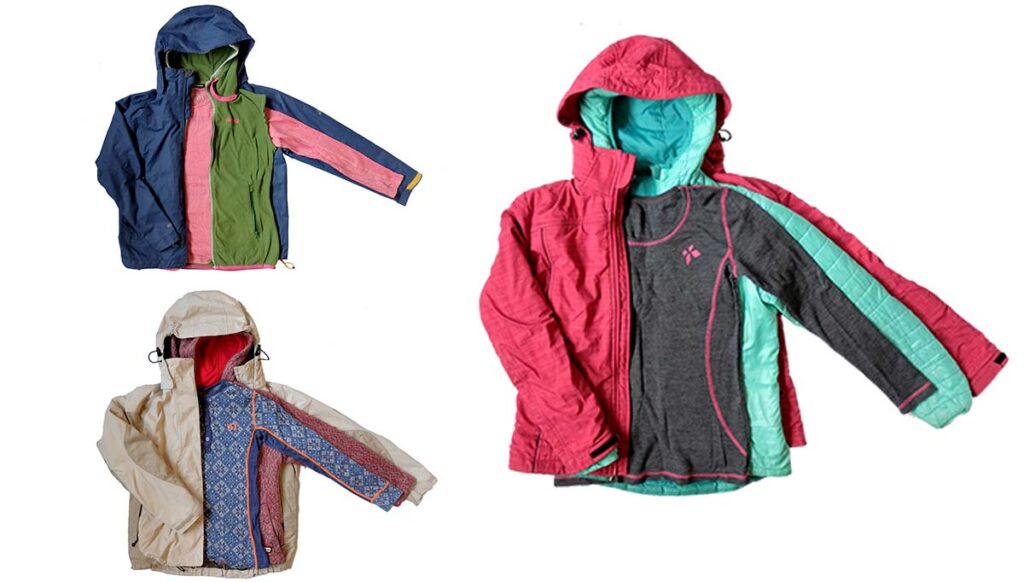
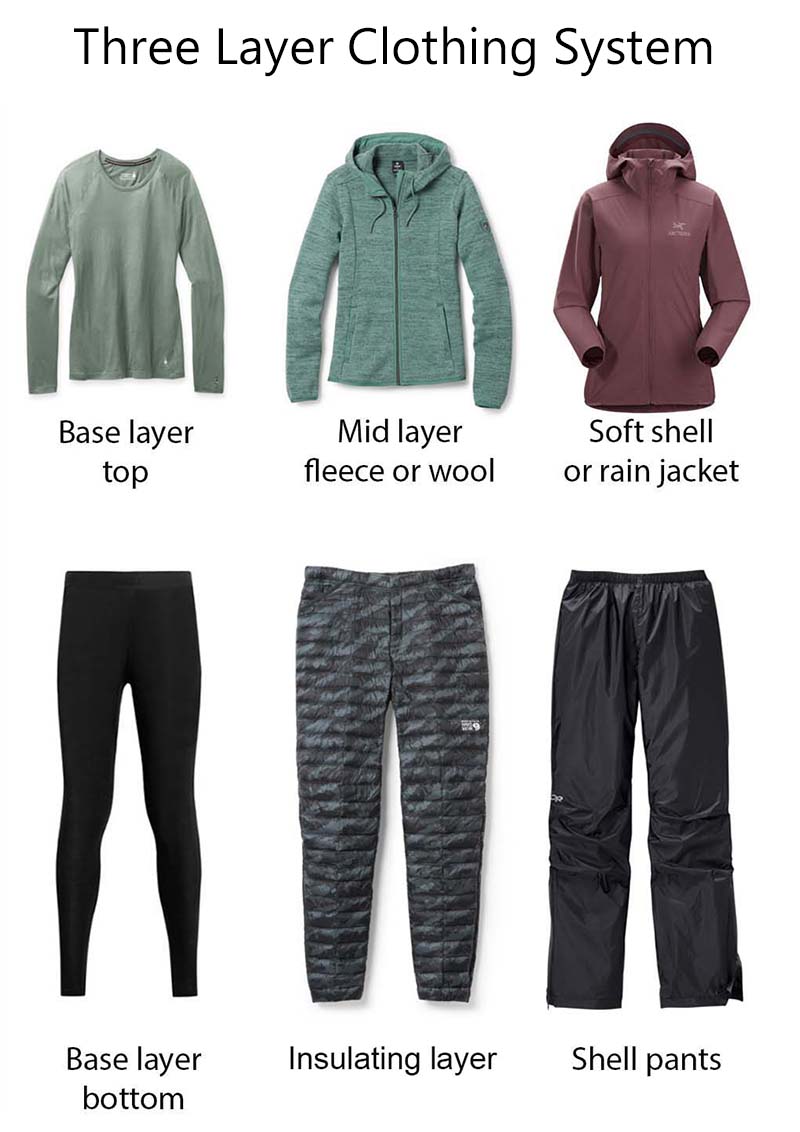
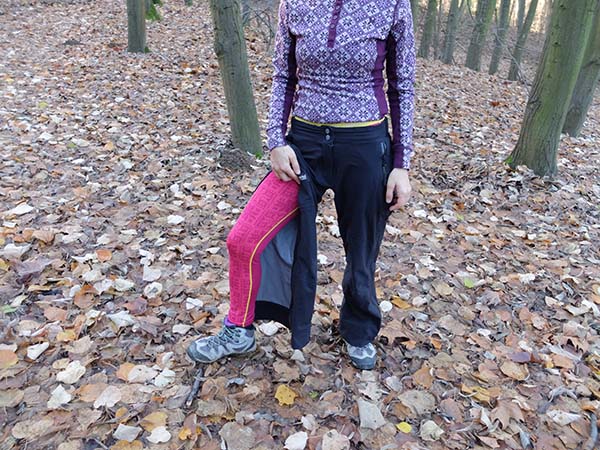
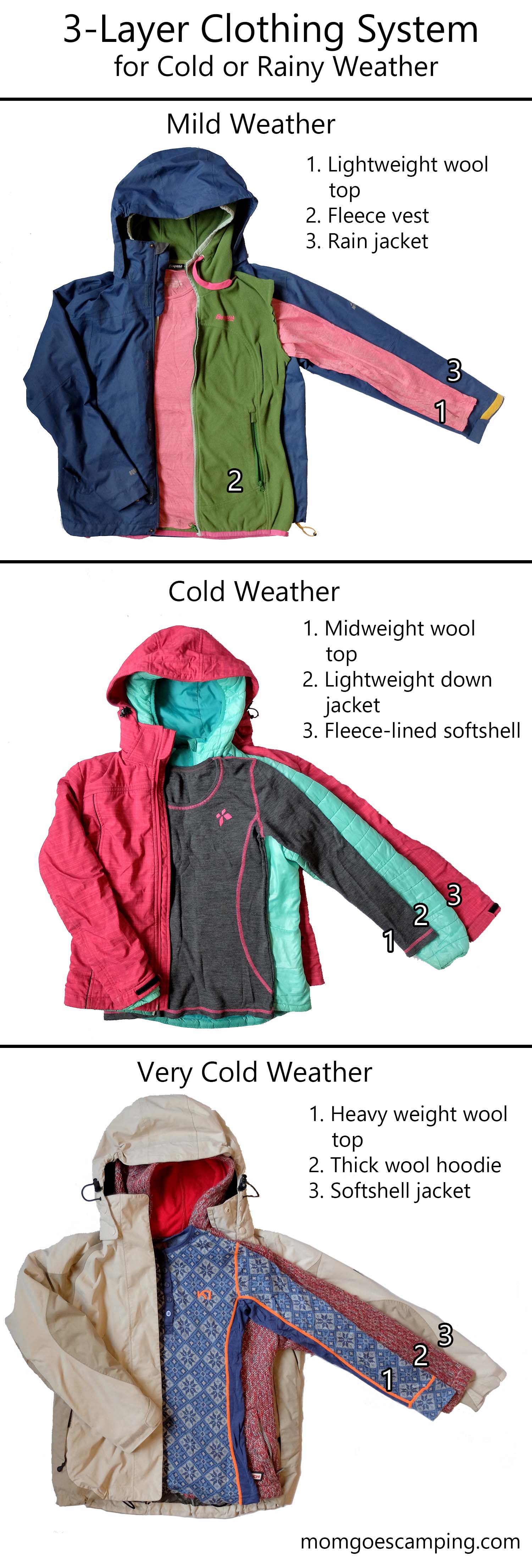

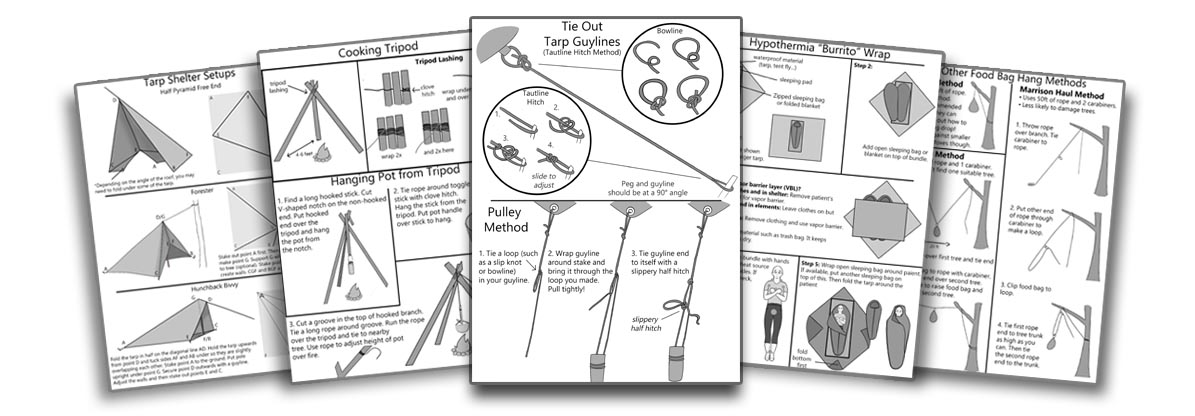


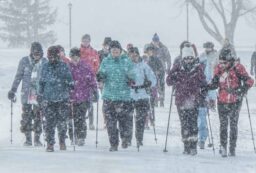







Post your comments